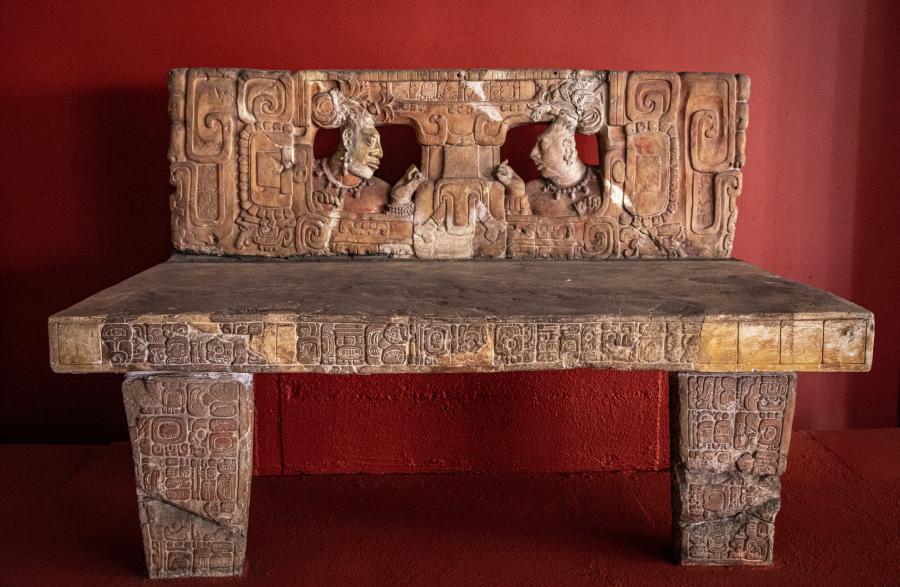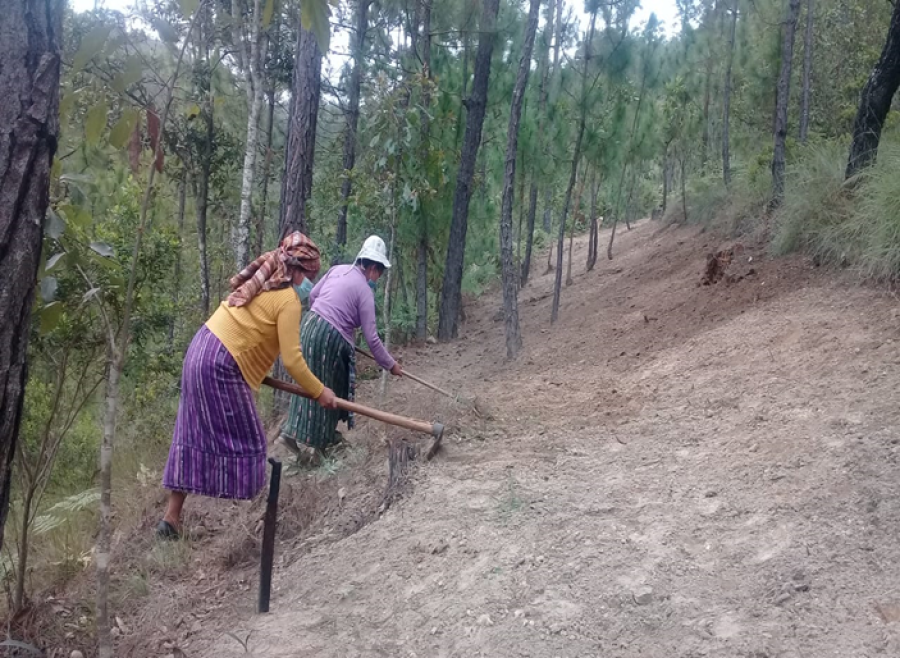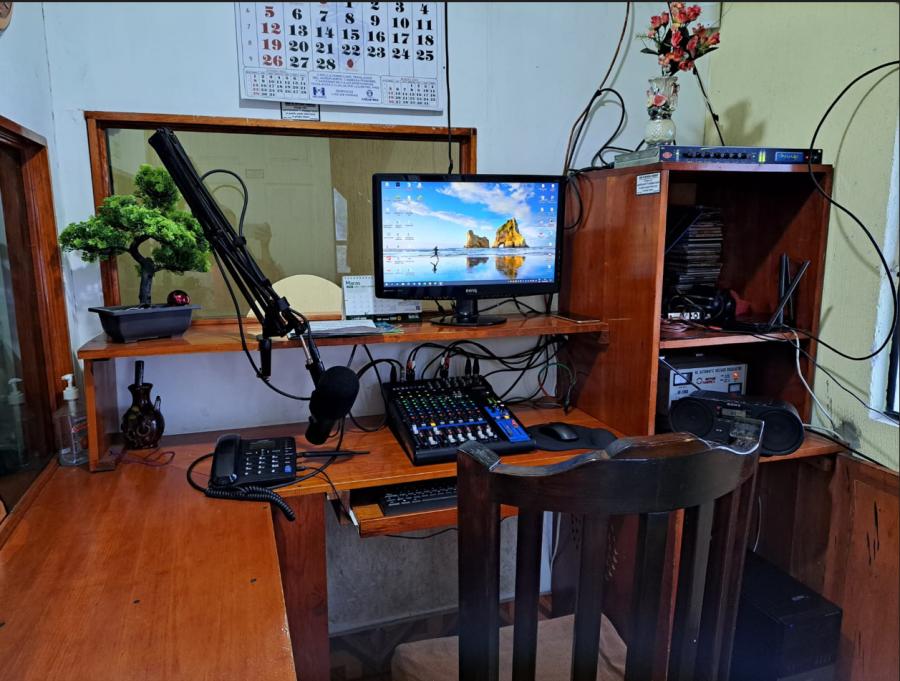On December 29, 1996, huge crowds gathered in Guatemala City's central square and cheered representatives of the government, military, and guerrillas as they signed the "Accord for a Firm and Lasting Peace." While this accord represents the first step in what will be a difficult and demanding process of reconciliation and reconstruction, it nevertheless reflects an extraordinary political achievement. One key element of the behind-the-scenes peace process was the involvement of indigenous groups who saw this as a unique opportunity to begin the process of transforming Guatemala into a multiethnic, pluricultural, and multilingual state.
Peace in Guatemala-Why Now?
The most recent wave of warfare in the late 1970s and 1980s took a devastating toll in the western highlands where most of the country's indigenous majority lives. An estimated 75,000 people were killed; half a million people out of a national population of eight million became internal refugees; 150,000 fled to Mexico as political and economic refugees; and 200,000 found their way to other countries like the United States. This was the worst of a series of national crises during the three decades of authoritarian regimes which plagued the country after 1954.
After the reduction of mass violence and the turn to civilian rule with the election of President Vinicio Cerezo in 1985, the military had few incentives to negotiate with the Guatemalan National Revolutionary Unity (URNG) guerrilla coalition which was pressing for an end to armed conflict. It was clear that the guerrillas would not be able to topple the state and establish a revolutionary socialist government. Despite its best efforts, however, the army was unable to extinguish the insurgency or capture its leadership. Peace in Guatemala would inevitably call for military downsizing and restrict the army's power to script presidential decision-making and national policy
By the early 1990s many Guatemalans felt the time was right for a negotiated peace. Rígoberta Menchú's popular movement received international attention, giving voice to the country's human rights abuses and the tragedies of hundreds of thousands of refugees, forced military recruitment, and clandestine cemeteries. After she was awarded the Nobel Peace Prize in 1992, international attention turned to human rights abuses, indigenous issues, and Guatemala's unresolved politics. Grassroots organizations-born of the violence and its aftermath-mobilized families, wage workers, agriculturalists, indigenous populations, and refugees. Given the threatening political environment, this leadership dedicated themselves, at great personal cost, to press for the public recognition of human rights abuses and for greater influence in national politics.
The Pan-Mayan movement, which gained prominence in the late 1980s, consists of indigenous professionals, teachers, development workers, small business owners, and agriculturalists. The movement seeks to unify diverse Mayan language communities, which make up 60% of the national population; to revitalize indigenous culture, language, religion, and environmentalism; and to promote culturally aware education at all levels including informal adult education. To realize their goals, the movement has created hundreds of research centers, schools, and language committees throughout indigenous regions of the country. The motive for their participation in the peace process was their desire to act on their analyses of the racist and assimilation policies of state institutions.
After years of U.S. sanctions for human rights abuses and European support of grassroots organizing, Guatemala would not enter the community of nations without a definitive peace. While politically leery of other Guatemalan sectors on many issues, the Guatemalan business community came to recognize the economic interests involved in a move to a more open society.
Finally, the civilian population wanted some sense of closure so that they could turn to pressing current problems. Citizens were exhausted by the militarization of daily life; the displacement of so many families from their home communities; the burden of war taxes extorted by underpaid soldiers, guerrillas, and criminals alike; and the unfinished business of family members who had been kidnapped, tortured, and "disappeared" to unknown fates.
The power of this crosscutting coalition among politically disparate groups became clear in 1993 when President Serrano Elías, with support from elements of the army's high command, attempted an authoritarian takeover of his own government, instituted media censorship, and attempted to dissolve Congress, the Supreme Court, and the Constitution. A surprising alliance of the business elite, union groups, students, and indigenous leaders successfully convinced the army that such a regime would lack international and national legitimacy. The takeover's failure demonstrated the powerful fluidity of interests and factions in Guatemala and growing citizen involvement in national politics. The momentum for democratic change became evident from the uncompromising national and international rejection of this coup.
Guatemala was surrounded by countries which had found ways to end internal wars and incorporate guerrilla forces into civil society and the political party system. The El Salvador peace accords, mediated under the auspices of the U.N. from 1990-92, paved the way for Guatemala. They provided an important lesson: to be successful, neg-otiations might well benefit from constructing a mandate beyond the immediate concern of demobilizing armed groups. A fuller agenda of issues would provide the opportunity to bring wider socioeconomic and democratic reforms and address the root causes of violence.
Many Guatemalans found it ironic and disconcerting that antagonistic armed forces with little experience in democracy were negotiating the fate of their nation in distant, secretive talks in Mexico and Europe. In response to these tensions, an advisory organization, the Assembly of Civil Society in Guatemala (ASC), was empowered in 1994 to set up consultative discussions with civilian leaders from many different sectors of society and to provide advisory documents for the peace process. The goal was to achieve wide-ranging consensus on key social issues. Popular and indigenous groups, among others, organized their own parallel meetings in a process that might otherwise have thoroughly marginalized civilian input.
The Accord
As a result of pressures, compromise, and consensus-building, indigenous fights gained a forum in the negotiations. Grassroots popular groups had promulgated human rights discourse in their early days of labor organizing and more recently in responding to military repression. To these concerns, Pan-Mayanists added the issue of collective cultural rights and self-determination, which they advocated through the Council of Mayan Organizations of Guatemala (COMG), a Mayan umbrella group. Pan-Mayanists drew international support from discussions at the United Nations on the rights of politically marginalized indigenous groups and the drafting and signatory process of ILO Convention 169 which lent legitimacy to cultural rights struggles. The civil assembly was seen by indigenous popular activists and Pan-Mayanists as a key moment to introduce indigenous issues onto the national agenda.
In the end, the peace process generated a separate "Accord on Identity and the Rights of Indigenous Peoples," in addition to the accords on human rights, resettlement, demilitarization, and socioeconomic and constitutional reforms. This accord was signed in 1995 by the government, military, and URNG high command. The document calls for a public acknowledgment of the fierce discrimination Guatemala's indigenous majority has endured on the basis of their distinctive origin, culture, and language.
The indigenous accord is divided into four parts which provide a measure of the substantial structural and cultural changes necessary to achieve their vision of a just society. The first part calls for the formal recognition of Guatemala's indigenous people, something denied them when non-Mayan mestizos, called ladinos, were conventionally assumed to be the standard of citizenship. Mayan identity is conceived of as having a plurality of socio-cultural and linguistic expressions, just as indigenous identity also includes the non-Mayan Xinca and Garifuna who also become rights-bearing groups in the accords.
The second part of the accords focuses on the struggle against discrimination. To achieve the peaceful coexistence of all ethnic groups, the accord urges legislative reform to make discrimination a crime, root out discriminatory laws, promote public education, and secure the active defense of rights by providing legal aid for the poor. The rights of indigenous women who receive double discrimination on the basis of ethnicity and gender draw special mention. It calls for a ratification of the International Convention for the Elimination of All Racial Discrimination and the ILO Convention 169 on Indigenous and Tribal Peoples.
The third section of the accord identifies key cultural rights for indigenous communities as the authors of their own cultural development. Key to these efforts would be the constitutional recognition of indigenous languages in schools, social services, official communications, and court proceedings. IndividuaLs and communities would gain the right to shed hispanic names as they wished.
Mayan spirituality and spiritual guides would be recognized and the distinct spiritual practices of different indigenous groups constitutionally protected. Of great concern is the conservation of temples, ceremonial centers, and archaeological sites as indigenous heritage and national patrimony. Indigenous communities should be involved in the conservation and administration of these centers. The use of indigenous dress in all arenas would be guaranteed and supported by educational programs.
The accord recognizes the existence and value of Mayan scientific and technological knowledge, which should be fostered and disseminated through a variety of institutions and media. Indigenous access to contemporary knowledge and opportunities for scientific and technical exchange are to be promoted. This section of the accords identifies wider access to mass media, especially the radio, for indigenous programming, broadcasts in indigenous languages, and the dissemination of educational programming for the wider public.
The government will commit itself to wide-ranging education reform that includes regional decentralization; the involvement of families in all areas of local education, especially the appointment of teachers; the integration of Mayan materials and educational methods; the promotion of indigenous languages and bilingual intercultural education; the promotion of national unity and cultural diversity at all educational levels; the development of bilingual teachers and indigenous administrators; and the expansion of educational funding for programs and students. In addition to programs for Mayan education, intercultural education would be supported for all children. The Mayan schools movement would be fostered along with the development of a Mayan university.
The fourth section of the accord deals with constitutional reforms in civil, political, social, and economic rights. Decentralization would be promoted through government funded municipal autonomy involving the recognition of localized customary law and community decision-making powers in issues of local courts, education, health, culture, and community development. The accord calls for a reform of municipal codes and a regionalization of government structures along the lines of indigenous language communities to facilitate the participation of local communities in wider decision-making bodies. For indigenous interests to be actively pursued, indigenous representatives should be included in all administrative bodies and communities consulted whenever government actions might affect them. Training programs are mandated for judges and ministry officials. With subsidized access to legal aid and official interpreters, no one would be judged without access to court proceedings in their own language.
Regarding the urgent problem of indigenous land rights, the accords argue for the recognition of communal and individual land holdings, the right of communities to administer communal lands and natural resources according to local norms. In view of the historical vulnerability of local communities to land seizures by those with political connections, financial resources, and fluency in the national language (Spanish), the accords call for legislative and administrative reforms to title, protect, defend, and settle land claims; to provide educational, legal, and linguistic assistance so communities can defend their interests; and to compensate communities that have lost lands. The government is urged to distribute state lands to communities without sufficient land as long as this does not hurt small land owners.
Implementing Peace
Like the U.S. civil rights struggles in the 1960s, many of the reforms outlined in the indigenous accords are controversial in Guatemala. To be successful, the accords will have to generate new legislation and legal reform, institutional change, wider political representation in all public forums, and mechanisms for dispute settlement. To accomplish this, coalition-building with the existing political parties will be necessary. A great deal of work will also have to be done to convince non-indigenous Guatemalans that these reforms will benefit the country as a whole. Finally, the funding of cultural reforms will be a controversial issue in a neo-liberal climate where the government is cutting jobs, privatizing government functions, and facing a recession.
In the first months of the implementation of the accords, national priorities have focused on dismantling the civil patrols, disarming and reintegrating the guerrilla combatants, downsizing the army by a third, and removing mines from the countryside. Dealing with the many problems faced by internal and international refugees has been a major concern.The cause célèbre for grassroots activism has been challenging what many perceive to be a dangerously comprehensive amnesty program and the need to have an effective truth commission. Land issues are also highly politicized. Clearly many of the changes advocated in the accords will create new dilemmas and provoke intense political resistance.
Without the Pan-Mayan movement, the recognition of indigenous rights might have remained little more than a political gesture in the peace process. The guerrillas would have an opportunity to show they could be responsive to indigenous elements in the popular movement and gain leverage in the process, and the government would appear inclusive and universalistic to the international community With a decade of organizational experience and their own ties to international donors (the European Union, UNICEF, and the UN), Pan-Mayanists have already begun projects which flow from the indigenous accords. They are actively working to promote Mayan schools as forums in which children might gain an education supportive of indigenous culture and language. Additionally, they publish a wide variety of educational texts on indigenous issues, provide scholarships to indigenous students, and press for legal recognition of indigenous customary norms and the authority of elders in rural communities. Clearly, indigenous groups are not waiting for the official establishment of the accords; rather, they are already networking internationally and organizing locally to pursue their agenda for peace and a more inclusive national society.
Article copyright Cultural Survival, Inc.



